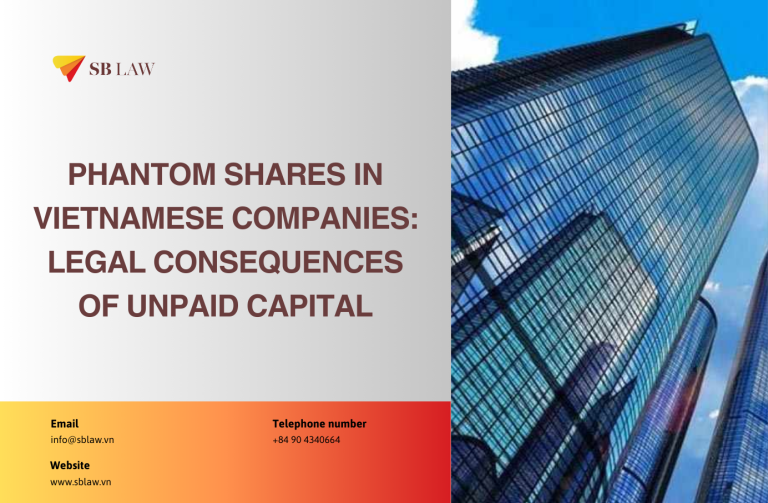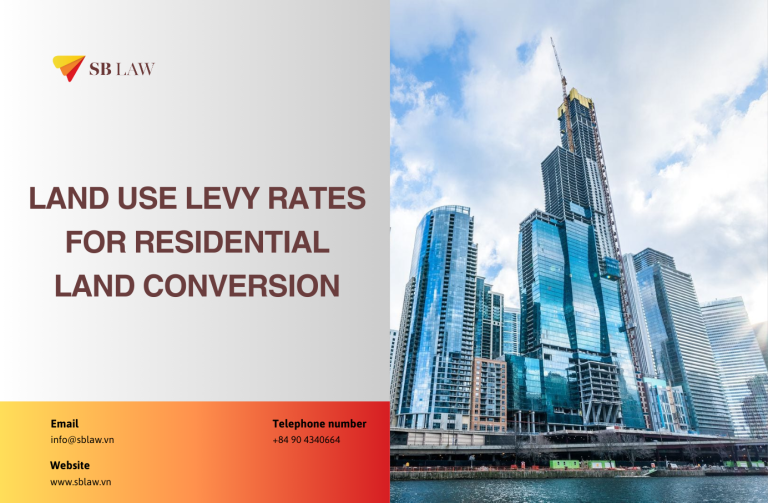Lawyer Nguyen Thanh Ha - Chairman of SB Law gave his opinion on "Growing Vietnam M&A market dependent on capital flow, pandemic containment" in The Investor magazine. Here are the details :
Merger and acquisition activities in Vietnam increased the most in a decade from 2007-2017 at a total scale of $10 billion.
However, due to the impact of Covid-19, from 2019 to the first half of 2021 the value of M&A deals dropped by 48.6%. M&A activities have recovered since the end of 2021, and the market scale may return to the normal level of $5 billion given positive foreign capital market attraction.
A report by the Ministry of Planning and Investment shows that in the first nine months of 2021, foreign investors' newly registered capital, expanded capital and capital contribution for stake acquisitions reached $22.15 billion, up 4.4% over the same period in 2020.
The capital focused on the fields of manufacturing, processing, wholesale and retail, technology, and real estate. The wave of investment in Vietnam is increasing with new legal corridor policies that allow Vietnamese enterprises to not only cooperate with partners in Vietnam but also access capital sources abroad from large investors. However, the M&A path retains both pros and cons.
Biggest challenges in implementing corporate M&A deals amid the pandemic
Firstly, aggregate demand dropped sharply, causing orders, contracts, and output to decrease. From 2019 to the end of 2021 when the pandemic peaked, average demand across industries decreased by 40-50%. The aviation, passenger transport, tourism, hotel and restaurant industries saw the sharpest drop in demand, down by up to 70-80%.
To maintain production and business, companies were forced to cut staff. However, they faced a shortage of labor or had to deploy social distancing in line with pandemic prevention regulations, so failing to meet order demand.
Congestion of goods at some seaports in the past was mainly due to pandemic-induced production stagnation. Demand decreased, businesses reduced output and production scale, so imported materials could not be put into production while goods could not be sent abroad.

Secondly, cash inflow was seriously short, making it difficult to maintain production and cover employee expenses (salary payment, insurance premium, social insurance, health insurance, unemployment insurance, union fees).
Due to a lack of cash flow, most businesses found it difficult to pay interest on time, leading to bad debt, which forced them to seek new loans. In addition, businesses still had to pay rent for premises, shops and factories while suspending operations. Besides, input and transportation costs increased daily.
Third, the supply chain of production, consumption and export was disrupted and stalled locally. Many affected manufacturing and exporting enterprises must delay or cancel orders. If the outbreaks last for a long time, they could lose the market because customers change their supply chains. Many large-scale enterprises with hundreds and thousands of employees had to suspend production, causing great damage to businesses and employees. Some large foreign-invested corporations with satellite factories in the supply chain in Vietnam considered finding alternative suppliers from other manufacturing facilities.
Fourth, difficulties in labor and entry for experts. In order to withstand the epidemic, many businesses had to downsize or minimize their human resources. This would make it very difficult for businesses to again access stable labor sources when production recovers after the pandemic, especially for occupations that require skilled and specialized workers, like mechanics and electronics. Foreign direct investment enterprises still faced difficulties with entry issues and the extension or issuance of work permits for foreign experts.
Issues companies need to pay attention to when carrying out an M&A deal
M&A is never an easy process; it can be laborious and time-consuming. When performing an M&A, businesses need to grasp the following essential points.
Firstly, financial resources for the transaction. Second, buying/selling competitors. The impact of the pandemic on the M&A market will be associated with the specific characteristics of economic sectors, business fields, and the situation of each country. Both buyers and sellers need to be aware that traditional market views may no longer be relevant in the “new normal”.
This can facilitate the buying enterprise to better assess the actions of the target enterprise's management and consider recommendations for adjustment in the appraisal when necessary.
For example, in order to estimate possible adjustments, there are several points that buyers need to consider: well-founded, not based on too many assumptions; assessment over a short period of time (for instance, monthly); assess the impact on all items on the income statement. For hypothetical adjustments, consider if the target business has been operating on a “normal” basis in the recent period to provide grounds for the adjustment.
Buyers also need to consider how long the target business will be impacted, temporarily or permanently, to determine the necessity of a one-time adjustment or the assumption of repeated adjustments for multiple periods; regularly reassess data and baselines (considering developments in the economic and health environment). If the activity shows signs of growth, also consider whether that growth is sustainable or not.
Third, timeline to close the deal. Fourth, crucial market conditions: up and down trends, changes in government policies, and political fluctuations. As businesses operate in a "new normal", previous growth trends may no longer be relevant. Financial projections based on latest actual results (for example, pre-Covid-19) will be an essential benchmark in assessing the soundness of projections.
Investors need to focus on the adaptability of the business model and the driving values of the target business during the appraisal process.
Fifth, in terms of legality, there are two critical elements of M&A transactions: financial and legal. In fact, an M&A deal has a lot of influential laws and documents that businesses need to study. They may be different for varying M&A transactions: Enterprise Law, Land Law, Investment Law, Competition Law, Intellectual Property Law, decrees, circulars etc. This is extremely difficult for businesses.
There is no solid legal department, so having a reliable M&A investment advisory unit is something that businesses need to pay attention to before and even when starting an M&A deal to ensure the rights and interests of the company thoroughly.
The trend of corporate M&A in near future
As 2022 is expected to see a rapid recovery of the world market, especially Vietnam's partner economies, money flow into Vietnam via M&As is expected to be more vibrant.
The Mergers and Acquisitions Forum 2021 late last year made positive forecasts that M&A activities in Vietnam would increase sharply in 2022.
The growing attraction of M&As in the country is clearly demonstrated not only in the growth of the total transaction value, but also in the average value of each transaction, as more and more deals are valued, with over $100 million recorded.
Favorable factors that create a boom for the M&A market in 2022, mentioned by experts, are that major economies in the world like the U.S., Japan, China, and EU are providing a large amount of money to restore and stimulate economic development.
Accordingly, cheap and abundant capital is being used by many corporations and investment funds in restructuring strategies, completing the ecosystem, and global value chain, and investing in new development models for potential businesses and projects in future. Vietnam will be an attractive destination for investors to disburse this capital flow.
In addition, the country has joined 17 new-generation free trade agreements (FTAs), including major deals like Regional Comprehensive Economic Partnership (RCEP), Comprehensive and Progressive Agreement for Trans-Pacific Partnership (CPTPP), and Vietnam-UK FTA (UKVFTA).
According to speakers at the M&A forum in 2021, the sectors that are forecast to attract M&A deals soon are retail, real estate, finance-banking, energy and healthcare, education, etc. In addition, the technology sector is also forecasted to be attractive to foreign investors in terms of M&A.
Although growth is forecasted for 2022 and the coming years, many believe that the domestic M&A market would face challenges related to mechanisms and policies. Accordingly, to support the M&A market, an effective capital mobilization channel for the economy is essential, in addition to controlling the epidemic, creating favorable conditions for businesses to negotiate successful M&A deals.
Investors are still expecting more favorable policies to promote this market to develop more strongly.




